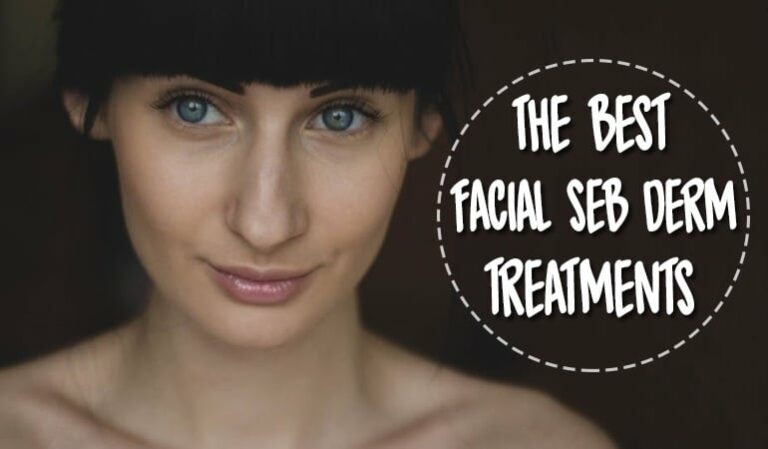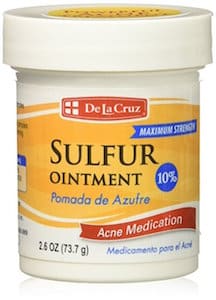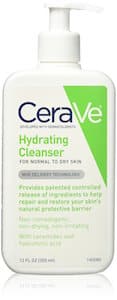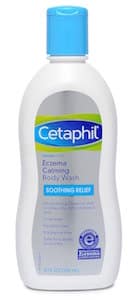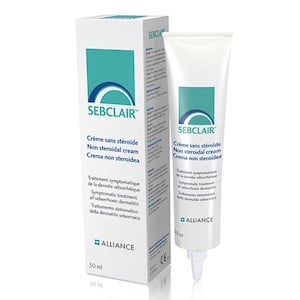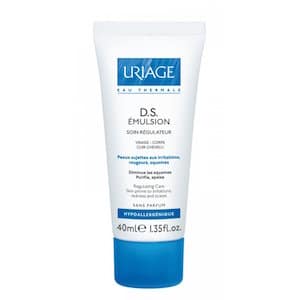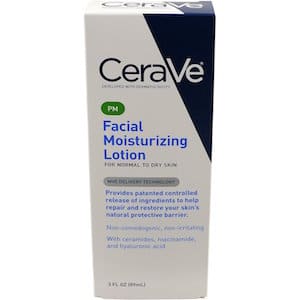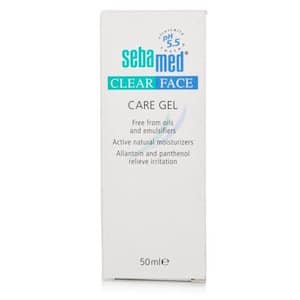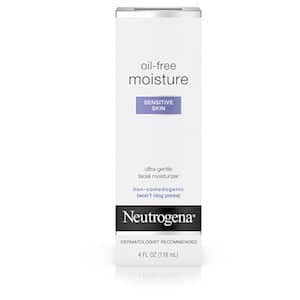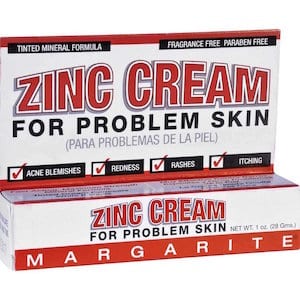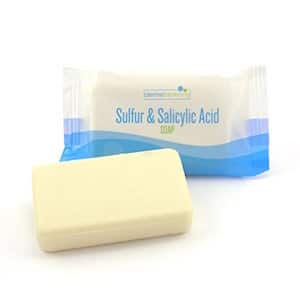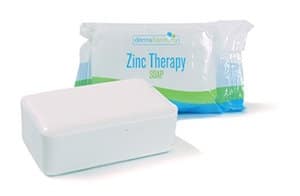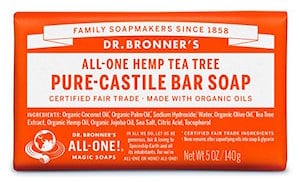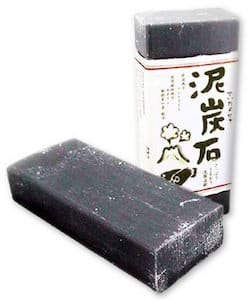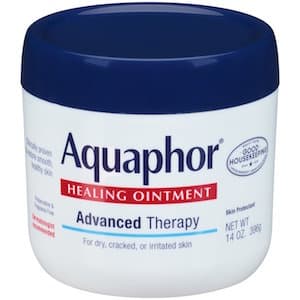Dandruff Deconstructed is reader-supported. All reviews are independent and any products reviewed are purchased by the site owner. To help fund this model, some of the links on the site are affiliate links. If you decide to make a purchase from one of these links, this site will receive some commission. At no cost to you. It helps keeps this place running. Learn more
Walk into any pharmacy or drugstore and you’ll see a wide selection of dandruff shampoos.
The vast majority of these contain an active ingredient, designed to combat seborrheic dermatitis on the scalp. This very site is devoted to the finding and recommending the gentlest, most effective dandruff shampoos on the market.
However, Seborrheic Dermatitis isn’t limited to the scalp. You are as likely to suffer from seb derm face, ears, eyebrows, beard and chest as on the scalp.
Going back to the pharmacy or drugstore that sells many dandruff shampoos. Try and find a seb derm treatment for your face, eyebrows, beard, ears or chest.
You’ll be looking a while…
The treatments do exist. There are lots of them too. They just take a little research.
So in typical dandruff deconstructed fashion, I’ve scoured the market, evaluated a ridiculous number of facial sd treatments and have recommended what I consider the best on the market today.
What we’ll cover in this article:
- What is facial SD?
- How to get rid of Seborrheic Dermatitis on your face
- The best treatments for facial Seb Derm.
What is Facial Seborrheic Dermatitis
Dandruff is the most famous manifestation of seb derm, but Seborrheic Dermatitis can affect the head, face, beard, eyebrows, ears or chest. Anywhere we have a proliferation of sebaceous (oil) glands.
The typical symptoms are redness, inflammation, itchiness, flaking skin and thick crusts of build up. In and in more severe cases sufferers will see yellow scaly pimples. In some cases, people can suffer hair loss!
So what causes Seborrheic Dermatitis?
If I could answer that I’d be a millionaire! The cause of seb derm is still unknown. However, we’ve made a lot of advances over the years. And a type of yeast has been implicated in the condition [1].
The yeast is of the Malassezia species. This particular yeast is a lipophilic yeast meaning it requires an environment high in fats and oils to flourish. The yeast is actually present on all people, and it has been proposed that seborrheic dermatitis is an inflammatory response to this yeast [2].
Little is understood as to why some people develop the condition. But we do know that the yeast and the condition react to antifungal medications. There is also a strong correlation between the amount of the yeast and the severity of the condition in sufferers [3].
Although the exact reasons are unknown, a number of reasons have been suggested. One suggestion is that the sufferer has underlying abnormal immune response [4]. Another is that the sufferer has a defective skin barrier function [5].
The Skin Defense Barrier
There are many layers to the skin.
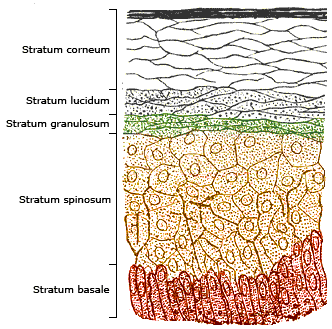
The very outermost layer – the layer we can see and touch – is called the Stratum Corneum.
The Acid Mantle is comprised of our sebum and sweat. This layer of skin, oils and sweat forms a crucial first line of defense against unwanted bacteria, the sun, chemicals, pollutants and other potential irritants. Its function is absolutely crucial.
Think of the Stratum Corneum and the Acid Mantle as bricks and mortar; the cells of the skin form the bricks and the sebum and sweat form the mortar. This combination forms a waterproof moisture barrier that minimizes water loss and helps the skin retain moisture.
As we get older our skin naturally dries. As we reach 40, the lipids we produce decrease substantially. This is why we are more prone to dry skin at this age and beyond.
We are now starting to understand just how important this barrier is – it forms a key element in a number of skin conditions.
For example, people with atopic dermatitis have a weaker skin defense barrier than non-sufferers.
Rosacea sufferers also have an imbalanced skin barrier, improvement of which can significantly reduce symptoms of rosacea. [6]
You probably won’t be surprised to know that sufferers of Seborrheic Dermatitis also have an imbalanced skin barrier. It has been proposed that the specific composition of skin surface oils may be a factor in seb derm development [7].
More specifically, for sufferers of seb derm, triglycerides and cholesterol are elevated. However, squalene and free fatty acids are significantly decreased. Free fatty acids are formed from triglycerides produced by P. acnes. Interestingly, P. acnes has been found to be markedly reduced in SD.
This suggests that seb derm sufferers may have an imbalance of microbial flora (bacteria that naturally live on our skin) as well as an altered composition of skin lipids [5].
How to get rid of Seborrheic Dermatitis on your face
Ignore marketing phrases
Protect your skin barrier
In short, having a healthy, balanced skin defense barrier is essential for a number of skin conditions. Fixing the skin defense barrier can reduce or even eliminate symptoms of these conditions. It is that simple.
There are a number of ways to protect your skin barrier.
Using a gentle face wash is a must – we review a number of them below.
And if none of them are gentle enough – you can even try washing using an aqueous cream!
Using a well-selected moisturizer is a must too.
Stop feeding the yeast
I can’t help but cringe when I hear of people with seb derm applying olive oil to their skin. Their intentions are good – it’s a natural healthy oil – however, some oils will irritate rather than help. For example, oils high in Oleic Acid can initiate a seb derm outbreak and worsen conditions [8][9].
In fact, Olive oil is actually used to feed fungus in lab conditions.
So smearing your face with Olive Oil (up to 85% Oleic Acid) is not a good idea if you suffer from seb derm.
It actually gets worse.
As many as 90%+ of moisturizers we apply daily contain fatty acids that feed seb derm.
Most species of Malassezia consume fatty acids with a carbon chain length of 11 through 24. [10]
If you look through the following list of fatty acids, only Octanoic Acid and Capric Acid will not feed the Malassezia yeast as they have carbon chain lengths of 8 and 10 respectively.

There are a number of invaluable references that comprehensively list fatty acids with their carbon chain lengths.
You need to make sure your moisturizers don’t contain these fatty acids.
Otherwise, you are feeding your seb derm.
It is that simple.
An alternative approach is to look for oil free moisturizers. There’s an abundance on the market these days. We review our favorites below.
Oh, and stop using aqueous cream as a moisturizer. It’s an irritant.
Use a good anti-fungal treatment
Seborrheic Dermatitis is proven to respond to anti-fungals. No ifs or buts. Just fact. [5]
The antifungal treatments SD is proven to respond to include:
- Ketoconazole
- Selenium Sulfide
- Sulfur
- Zinc Pyrithione
- Piroctone Olamine
- Ciclopirox Olamine
- Coal Tar
- Salicylic Acid
There are creams, facewashes, soaps, moisturizers and who knows what else with these active ingredients.
We review our favorites below.
Patch test all products
Patch testing is an excellent way to determine if a product is for you. Particularly if you have sensitive skin.
This is a great guide on how to patch test.
https://simpleskincarescience.com/patch-test/
Try a natural or alternative treatment
While there are a whole host of snake oil salesmen to watch out for, there is growing anecdotal, medical and community-based evidence that there are a few natural/alternative treatments worth considering.
Honey
There are numerous studies that raw honey is effective at controlling seb derm.
I’ve personally never been fond of using it on my skin but there are plenty of people out there who swear buy it.
Aloe vera
Aloe Vera is an anti-inflammatory effective at healing wounds. However, there are anecdotal claims that it’s effective at controlling or killing the biofilm that the Malassezia yeast can develop. Literally preventing the yeast from preventing itself.
There are numerous aloe vera gels and lotions available on Amazon.
Best Treatments for Facial Seb Derm
De La Cruz Sulfur Ointment
Facemask
This sticky face mask contains 10% sulfur so it’s for serious cases of facial seb derm. But used correctly and, boy, is it worth it. Along with 10% sulfur, it contains only one ingredient – Polyethylene glycol – a petroleum byproduct. Typically I’d avoid using Petroleum byproducts on my skin – they are typically water insoluble and build up on the skin – but there are overwhelming amounts of research and patents on the healing and anti-inflammatory powers of this icky sticky substance.
As I said, this is a facemask. Use with care as 10% sulfur is as strong as it gets OTC. I patched tested it, used it for 10 minutes, then 20 minutes and use it now for an hour and the results have been extraordinarily good.
It may be sold as an acne treatment, but it’s also a great choice for rosacea too. And as far as facial seb derm treatments go – this is as good as it gets OTC.

Cerave Hydrating Facial Cleanser
Facewash
This gentle face wash has been a firm favorite at Dandruff Deconstructed towers for a number of months now. Endorsed by National Eczema Association, this odorless face wash contains ceramides (lipids naturally present in our skin’s protective barrier), and a number of gentle moisturizing agents. It’s sulfate free and the surfactants are all extremely gentle.
Unfortunately the face wash contains parabens. Parabens are used to preserve the product, to give it a longer shelf life, but we all know about the bad press associated with them.
That said, parabens aside, this is an extremely innovative formulation.
If you suffer from facial sd, and want to wash while keeping your skin barrier in balance, you have to check this one out.

BIOM8 Skin Conditioning Oil
Skin Conditioning Oil
BIOM8 Skin Conditioning Oil is now part of my daily skincare routine. It’s as simple as that. I have lost count of the number of products I’ve reviewed over the years and I can count on one hand the number of products that have impacted me on this level.
If you suffer from dry skin, facial seb derm or rosacea I simply can’t recommend this product highly enough.
It even makes a good beard oil!

Cetaphil Restoraderm Body Wash
Bodywash
This silky smooth body wash is a firm favorite here at Dandruff Deconstructed. It’s free of harsh sulfates and betaines while containing a number of gentle surfactants commonly used in baby products. The body wash also contains some innovative skin conditioning agents such as Niacinamide (Vitamin B3) and Sodium PCA which is naturally found on our skin. The company has added two of my favorite ingredients full stop. Allantoin is commonly found in anti-aging products as it promotes skin cell regeneration and helps smooth the skin. Commonly found in anti-aging products. Arginine is an antioxidant that helps build collagen production.
There are two oils present worth mentioning. Shea Butter and Sunflower Seed Oil are both excellent moisturizers, but they are both high in fatty acids that seb derm loves. Be sure to really rinse this product after washing.
It also contains Tocopheryl Acetate. While it sounds nasty, it is actually Vitamin E. Some people are known to react to this ingredient. They’ve also added Potassium Sorbate to prevent mold growth. Unfortunately, this is also a known contact allergen in some of us.
If you’re not sensitive to these ingredients, this is one of the (if not the) best bodywashes on the market right now.

SebClair Non-Steroidal Cream
Medicated Moisturizer
SebClair Non-Steroidal Cream is an anti-fungal, Piroctone Olamine based treatment partnered with a trophy cabinet of natural anti-inflammatory actives. If you have a mild to moderate case of seb derm, hate steroids and love naturals SebClair is for you. Best bit – there’s only two known allergens or irritants.

Uriage DS Emulsion
Medicated Moisturizer
This medicated moisturizer contains one of my favorite active ingredients at the moment – Piroctone Olamine. While the moisturizer is light and contains a number of novel, gentle skin conditioning agents, it is worth noting that it contains shea butter – which is essentially a meal for the Malassezia yeast.
That said, if Piroctone Olamine works for you then you can’t go far wrong with this excellent medicated moisturizer.

Cerave PM Facial Moisturizing Lotion
Oil Free Moisturizer
This is a unique oil free moisturizer, using Caprylic/Capric Triglycerides as the base ingredients to moisturize the skin.
Like the Cerave face wash (above), this moisturizer contains ceramides which are essentially lipids naturally present in our skin’s protective barrier. It also contains a number of innovative skin conditioning agents such as Hyaluronic Acid which you’ll find in your connective tissue.
This is highly, highly recommended.

Sebamed Clear Face Care Gel
Oil Free Moisturizer
This gentle oil free moisturizer contains Aloe Vera to help calm the skin, Sorbitol/Panthenol/Sodium Hyaluronate to help moisturize the skin and Allantoin to promote skin cell regeneration and smooth the skin.
It does however contain Propylene Glycol and Phenoxyethanol which we know are both irritants.
However, if you aren’t sensitive to either ingredient this is an excellent alternative to the usual oil based moisturizers.

Neutrogena Visibly Clear Oil Free Moisturiser
Oil Free Moisturizer
Another oil free option that contains roughly 50 different ingredients.
As well as a whole list of skin conditioning agents, this moisturizer contains Salicylic Acid. Salicylic Acid is excellent for short term usage at combatting facial seb derm, it can dry the skin after prolonged usage.
There are a few other alcohol based ingredients that can further dry the skin. And unfortunately, the company have chosen parabens to preserve the moisturizer.
This is recommended for short term useage though.

Margarite Zinc Cream
Medicated Cream
Superb. A life saver.
Despite the name, this is a 4% sulfur cream that also contains zinc oxide.
It’s also a tinted cream, indicating it can be used during the day, however I leave this cream on affected areas overnight. The results have been absolutely outstanding.
This innovative formula uses zinc oxide to provide the tint – an ingredient that also makes a great safe sunscreen. In addition, it contains a number of fatty moisturizing alcohols, waxes and oils.
But it’s the performance that counts and if you suffer from facial seb derm, acne or rosacea, this is a quite superb treatment.
It can dry the skin after prolonged usage, but it’s in my weekly routine and it has been a lifesaver.
I simply urge you to try it.

Dermaharmony Sulfur Soap
Medicated Soap
Sulfur is one of my new favorite active ingredients. Not least because it is also superb at combatting facial redness, rosacea and acne – conditions I suffer from as well as seb derm.
This soap is enhanced by the presence of salicylic acid – a keratolytic that will soften any existing build up and help the sulfur penetrate your skin more easily. I love the potential of these two ingredients combined.
This particular soap also contains oatmeal which can really help to calm eczema prone skin.
As with all soaps, the presence of oils can feed the Malassezia yeast so make sure you rinse completely.

Dermaharmony Zinc Soap
Medicated Soap
Zinc Pyrithione is possibly the most widely used active ingredient on the market today. While it isn’t the strongest anti-fungal agent out there, it is widely tolerated, hugely popular and can help those with mild cases of facial seb derm.

Dr Bronners Tea Tree Pure Castille Bar Soap
Medicated Soap
A fantastic medicated soap containing tea tree oil. The combination of oils e.g. coconut, palm, olive and jojoba will all feed your seb derm so make sure you rinse completely after washing. They also prevent this from drying your skin, like so many soaps can.

Pelican Deitanseki Soap
Medicated Soap
This is a novel soap. We have long known about the benefits of mineral son our skin. This Japanese soap contains:
Kaolin – a kind of clay used topically to help treat wounds and burns. Can help dry over-oily skin.
Bentonite – used for centuries as a topical treatment for eczema, seb derm and other inflammatory conditions.
Carbon – a bit of a wonder treatment for many skin conditions. It helps makes pores smaller, regulates sebum on the skin, absorbs toxins and is an anti-inflammatory.
Which is a fantastic start. I’ve never seen so many other in a bar of soap though. Some of them are questionable. Etidronic Acid is present in a couple of guises and this is a known irritant. In addition, they’ve added perfume.
That said, if you aren’t particularly sensitive to perfumes, the minerals alone make this treatment worth a try.

Aquaphor
Ointment
Aquaphor is a vaseline like water free oily substance very popular with those who suffer from exceptionally dry skin.
It’s also a great moisturizer and healing ointment for those of us who suffer from seb derm as the carbon chain lengths of this ointment fall way outside the range that Malassezia feeds.
There is also anecdotal evidence that it destroys or damages the biofilm of the Malassezia yeast.
While this is a very sticky, messy substance to apply, if you suffer from extremely dry skin and facial seb derm then this is really worth trying.

References
1. Hay RJ, Graham-Brown RA. Dandruff and seborrhoeic dermatitis: causes and management. Clin Exp Dermatol. 1997;22:3–6.
2. Parry ME, Sharpe GR. Seborrhoeic dermatitis is not caused by an altered immune response to Malassezia yeast. Br J Dermatol. 1998;139:254–63.
3. Zaidi Z, Wahid Z, Cochinwala R, Soomro M, Qureishi A. Correlation of the density of yeast Malassezia with the clinical severity of seborrhoeic dermatitis. J Pak Med Assoc. 2002;52(11):504-506.
4. Orfanos CE, Zouboulis CC. Oral retinoids in the treatment of seborrhoea and acne. Dermatology. 1998;196:140–7.
5. DeAngelis YM, Gemmer CM, Kaczvinsky JR, et al. Three etiologic facets of dandruff and seborrheic dermatitis: Malassezia fungi, sebaceous lipids, and individual sensitivity. J Investig Dermatol Symp Proc. 2005;10(3):295-297.
6. Flavia Alvim, Sant’Anna Addor Skin barrier in rosacea. An Bras Dermatol. 2016 Jan-Feb; 91(1): 59–63.
7. Bolognia JL, Jorizzo JL, Rapini RP, et al. Dermatology. 2. Spain: Elsevier; 2008.
8. Dawson TL Jr Malassezia globosa and restricta: breakthrough understanding of the etiology and treatment of dandruff and seborrheic dermatitis through whole-genome analysis. J Investig Dermatol Symp Proc. 2007 Dec;12(2):15-9.https://www.ncbi.nlm.nih.gov/pubmed/18004291
9. Yvonne M. DeAngelis, et al. Three Etiologic Facets of Dandruff and Seborrheic Dermatitis: Malassezia Fungi, Sebaceous Lipids, and Individual Sensitivity December 2005 Volume 10, Issue 3, Pages 295–297
10. Peter F Wilde, Patrick S Stewart A Study of the Fatty Acid Metabolism of the Yeast Pityrosporum ovale Biochem. J. (1968) 108, 225
